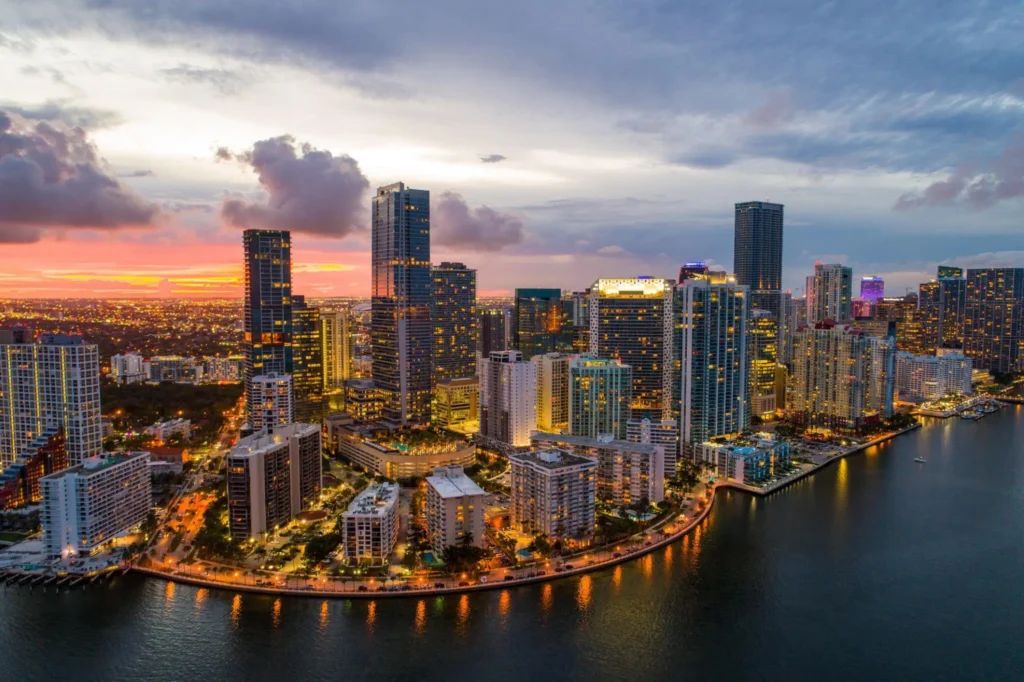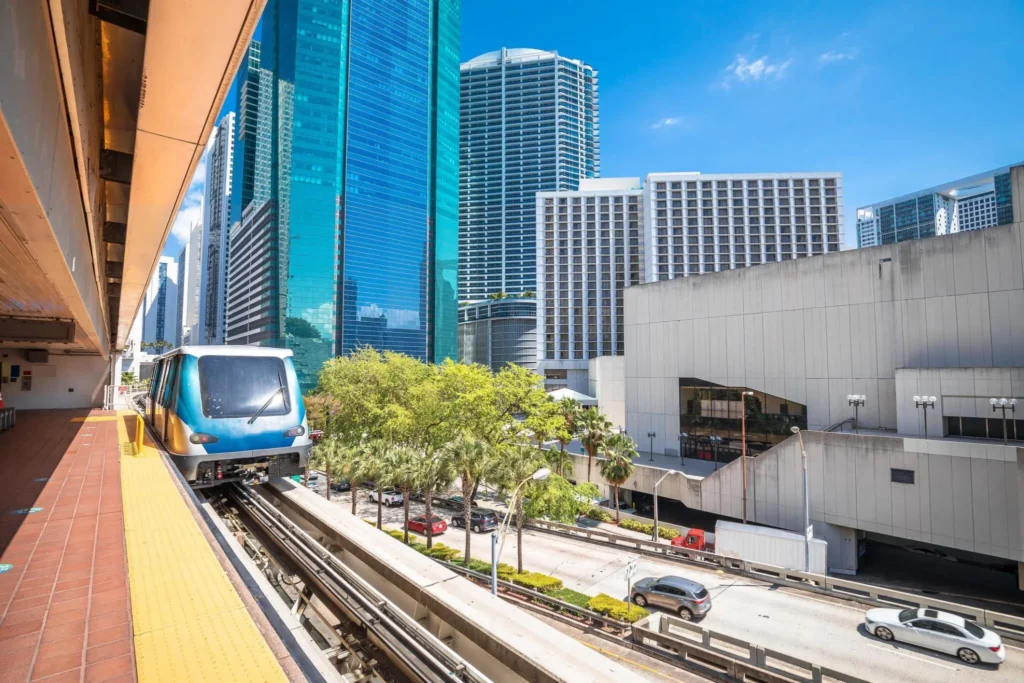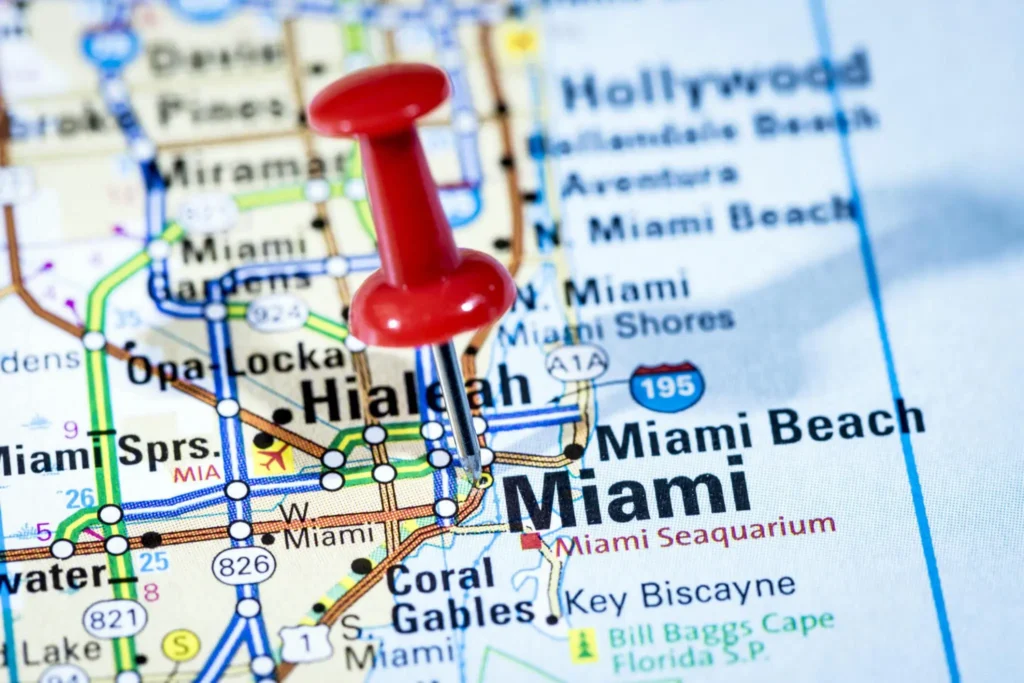Unveiling the Splendour of Miami A Tropical Paradise of Endless Sunshine
With its year-round warmth, inviting beaches, and a mix of sun-kissed summers and breezy winters, it offers plenty of entertainment such as sports like Miami Heat. The Miami Heat are an American professional basketball team based in Miami.
9 Mins
105 Views
August 21, 2023
Miami’s Natural Wonders: Exploring the Everglades and Beyond
Miami’s natural wonders offer a unique chance to explore the diversity and complexity of South Florida’s ecosystems. The Everglades National Park, a UNESCO World Heritage Site, is a vast and mysterious wetland ecosystem outside city limits. This park is characterized by slow-moving rivers, dense mangrove forests, and abundant wildlife, including alligators, crocodiles, manatees, and numerous bird species. Visitors can explore the park via airboat tours or hiking trails, offering a glimpse into this region’s unique and fragile ecosystem.
In addition, the nearby Florida Keys offer crystal-clear waters, coral reefs teeming with marine life, and picturesque island landscapes. John Pennekamp Coral Reef State Park, the first underwater park in the United States, provides opportunities for snorkelling and scuba diving, allowing visitors to discover the ocean’s hidden treasures. Within the city limits, Miami has its natural gems, such as the Fairchild Tropical Botanic Garden, home to exotic plants and trees worldwide, and the Bill Baggs Cape Florida State Park, featuring a historic lighthouse and pristine beaches. Whether interested in exploring the depths of the ocean or the heights of a tropical rainforest, Miami’s natural wonders will inspire and captivate.
The Early Years: A Brief History of Miami
Miami’s history spans thousands of years, starting with indigenous tribes like the Tequesta. European explorers arrived in the late 15th century, and the Spanish established missions and settlements, displacing native populations. In the early 19th century, the US government promoted settlement in South Florida, and the village of Miami was established in 1842. The city grew slowly until the Civil War when it served as a supply depot for Confederate forces.
After the war, Miami experienced significant growth due to agriculture, particularly citrus farming, and became a fruit production and shipping centre. Tourism and real estate speculation fueled further growth in the early 20th century, and the city invested heavily in infrastructure. Miami played an essential role in the war effort during World War II. After the war, it continued to expand, becoming a global city known for its diverse population, vibrant culture, and stunning architecture.

Miami’s Cultural Melting Pot: A Blend of Diverse Influences
Miami’s cultural diversity is a defining characteristic of the city, reflecting the diverse backgrounds of its residents. The city’s cultural melting pot blends various influences, including Latin American, African American, European, and Caribbean traditions. Latin American culture is a prominent aspect of Miami’s cultural landscape, with Cuban cuisine and salsa music being trendy. The city’s African American community has significantly contributed to Miami’s cultural landscape, with notable figures like Muhammad Ali and James Brown calling the city home.
European culture also plays a substantial role in Miami’s cultural scene, with architectural styles and fashion influencing the city’s aesthetic. Lastly, the Caribbean influence is evident in Miami’s music and cuisine, with genres like reggae and calypso being popular among locals and visitors alike. Miami’s cultural diversity reflects its diverse population and location as a cultural exchange and innovation hub.

Miami’s Enchanting Location: Beaches, Climate, and Natural Beauty:
Miami’s enchanting location is one of its most appealing attributes, offering a unique combination of beautiful beaches, tropical climate, and natural beauty. The city’s famous beaches, such as South Beach and Miami Beach, are known for their white sand and crystal-clear waters, providing a picturesque setting for sunbathing, swimming, and water sports. The warm and sunny climate, with an average temperature of 75 degrees Fahrenheit, makes Miami an ideal destination for outdoor activities year-round, from beach volleyball and surfing to boating and fishing.
The surrounding natural beauty, including the Everglades National Park and the Florida Keys, offers endless opportunities for exploration and adventure, from hiking and camping to snorkelling and scuba diving. The city’s proximity to the ocean and its position as a gateway to the Caribbean and Central America also makes it a hub for international trade and commerce, further enriching its cultural landscape. Overall, Miami’s enchanting location is critical to its reputation as a top tourist destination and a desirable place to live, work, and play.

Attractions and Activities: Things to Do in Miami
Miami, Florida, is a vibrant city with many tourist attractions and activities. From its beautiful beaches and outdoor recreational opportunities to its rich cultural offerings and exciting nightlife, there’s something for everyone in this dynamic metropolis. Some top things to do in Miami include visiting iconic South Beach, where you can soak up the sun, stroll along the Art Deco District, and enjoy Ocean Drive’s lively atmosphere. The Everglades National Park, located just outside the city, offers opportunities for hiking, bird-watching, and airboat tours. At the same time, the nearby Florida Keys provide a perfect destination for snorkelling, diving, and boat trips.
Cultural enthusiasts will appreciate the Vizcaya Museum and Gardens, a stunning estate built in the early 1900s, and the Pérez Art Museum Miami, which features contemporary and modern art exhibitions. Families can enjoy the Miami Children’s Museum, the Miami Metrozoo, and the Miami Science Barge, a floating marine laboratory and education centre. The city comes alive at night with various bars, clubs, and live music venues, offering everything from salsa dancing to electronic music. With so much to see and do, it’s no wonder that Miami is a popular destination for tourists and locals alike.

Food and Drink: A Culinary Journey Through Miami
Miami is a city that boasts a rich culinary heritage, reflecting its diverse cultural influences and vibrant community. From fresh seafood to Cuban cuisine and artisanal coffee to craft cocktails, Miami offers a culinary journey that promises to delight even the most discerning palates. Start your day with a visit to one of the many cafes in Little Havana, where you can indulge in a traditional Cuban breakfast of pastelitos and cafe con leche. For lunch, head to the Design District, where you’ll find various trendy restaurants serving everything from gourmet burgers to farm-to-table vegan delights.
In the evening, go to South Beach, where you can enjoy fresh seafood at one of the many oceanfront eateries or sample some of the city’s famous Cuban cuisine at a classic restaurant like Joe’s Stone Crab. And don’t forget to wash it all down with a refreshing mojito or two – after all, this is the birthplace of the iconic cocktail. Whether looking for a casual bite or a fine dining experience, Miami has something for everyone, making it a culinary destination.

Accommodation: Where to Stay in Miami
Regarding accommodations, Miami offers many options to suit every taste and budget. From luxurious beachfront resorts to stylish boutique hotels and budget-friendly hostels to vacation rentals, there’s something for everyone in this vibrant city. If you’re looking for a pampered stay, consider one of the many high-end resorts along Miami Beach, such as the Fontainebleau Miami Beach or the W South Beach. These properties offer lavish amenities, beautifully designed rooms, and direct access to the beach. For a more intimate experience, check out the boutique hotels in the Art Deco District, such as The Betsy Hotel or The Villa Casa Casuarina, which offer unique designs and personalized service.
If you’re travelling on a budget, plenty of affordable options are available, too, including hostels like the Generator Miami and the Pod Hotels, which offer comfortable shared and private rooms at reasonable prices. Alternatively, consider booking a vacation rental through platforms like Airbnb, which provides various apartments, houses, and condos throughout the city, often cheaper than traditional hotels. No matter where you choose to stay, research the location carefully, considering factors like proximity to attractions, public transportation, and safety to ensure a smooth and enjoyable trip to Miami.

Getting Around Miami: Transportation Options
Miami offers a variety of transportation options, making it easy to get around the city and its surrounding areas. The most popular mode of transportation in Miami is driving, and visitors can rent cars or take their vehicles to explore the city. However, be aware that traffic in Miami can be heavy, especially during peak hours, so plan your route accordingly. Another option is public transportation, which includes buses and trains. The Miami-Dade Transit system operates buses that cover most areas of the city, and the Metrorail is a convenient way to travel between downtown Miami, Coral Gables, and other nearby towns. Visitors can also use ride-sharing services like Uber or Lyft, which are widely available and relatively affordable.
Additionally, Miami has a bike-share program called Decobike, which allows visitors to rent bicycles for short periods. For those who prefer water transportation, various boat tour operators offer tours of Miami’s coastline and surrounding islands. Finally, walking is also a great way to explore specific neighbourhoods, such as South Beach and Coconut Grove, where pedestrian-friendly streets are filled with shops, restaurants, and attractions. Overall, Miami offers a range of transportation options, allowing visitors to choose the best method for their needs and preferences.

Planning Your Trip to Miami: Tips and Essentials
Planning a trip to Miami can be exciting and overwhelming, but with some tips and essentials, you can make the most of your visit. Firstly, deciding when to visit Miami is important, as the city experiences a subtropical climate with hot and humid summers and mild winters. The best time to visit is from December to April when the weather is pleasant and suitable for outdoor activities. When packing, remember that Miami’s dress code is generally casual and comfortable, but it’s always a good idea to bring lightweight clothing, sunscreen, and sunglasses. Additionally, don’t forget to pack your swimwear, as Miami’s beaches are world-renowned and a must-visit attraction. Before arriving, research the neighbourhoods and areas of interest, such as South Beach, Wynwood, and Little Havana, and create an itinerary that suits your interests and preferences. Booking accommodations in advance is also recommended, as Miami’s hotel rates can be pretty high, especially during peak season.
Furthermore, consider purchasing a Miami Tourist Pass, which grants access to several top attractions and saves money compared to buying individual tickets. Lastly, familiarize yourself with local transportation options, such as the Metromover, Metrorail, and bus systems, which provide an affordable and efficient way to navigate the city. With these tips and essentials, you’ll be well-prepared for an unforgettable trip to Miami.

Map of Miami, Florida
The Miami, Florida, United States map is valuable for navigating diverse neighbourhoods and attractions. The city has four main quadrants: Downtown Miami, Miami Beach, North Miami, and South Miami. Downtown Miami is home to many of the city’s significant landmarks, including the Port of Miami, the American Airlines Arena, and the Adrienne Arsht Center for the Performing Arts. Miami Beach, located on a barrier island east of the city, is known for its white sand beaches, clear blue waters, and Art Deco architecture.
North Miami includes the suburban communities of Little Haiti and Liberty City, while South Miami encompasses the upscale neighbourhoods of Coral Gables and Coconut Grove. Other notable areas on the map include Wynwood, known for its street art and trendy bars, and the Everglades National Park, a protected wetlands area that borders the city to the west. Whether you’re looking for culture, entertainment, or outdoor activities, the map of Miami is an essential resource for any visitor.

Conclusion: Why Miami Should Be Your Next Destination
In conclusion, Miami is a vibrant and diverse city that offers something for everyone. From its stunning beaches and vibrant nightlife to its rich culture and history, Miami is a destination that will leave you wanting more. Whether you’re looking for relaxation, adventure, or simply a chance to immerse yourself in a new and exciting environment, Miami has it all. With its unique blend of Caribbean, Latin American, and American influences, Miami’s cuisine, music, and art scenes are not to be missed. Plus, with its prime location, Miami offers easy access to the Florida Keys, Everglades National Park, and other natural wonders. So why wait? Book your trip to Miami today and experience all this incredible city offers.
